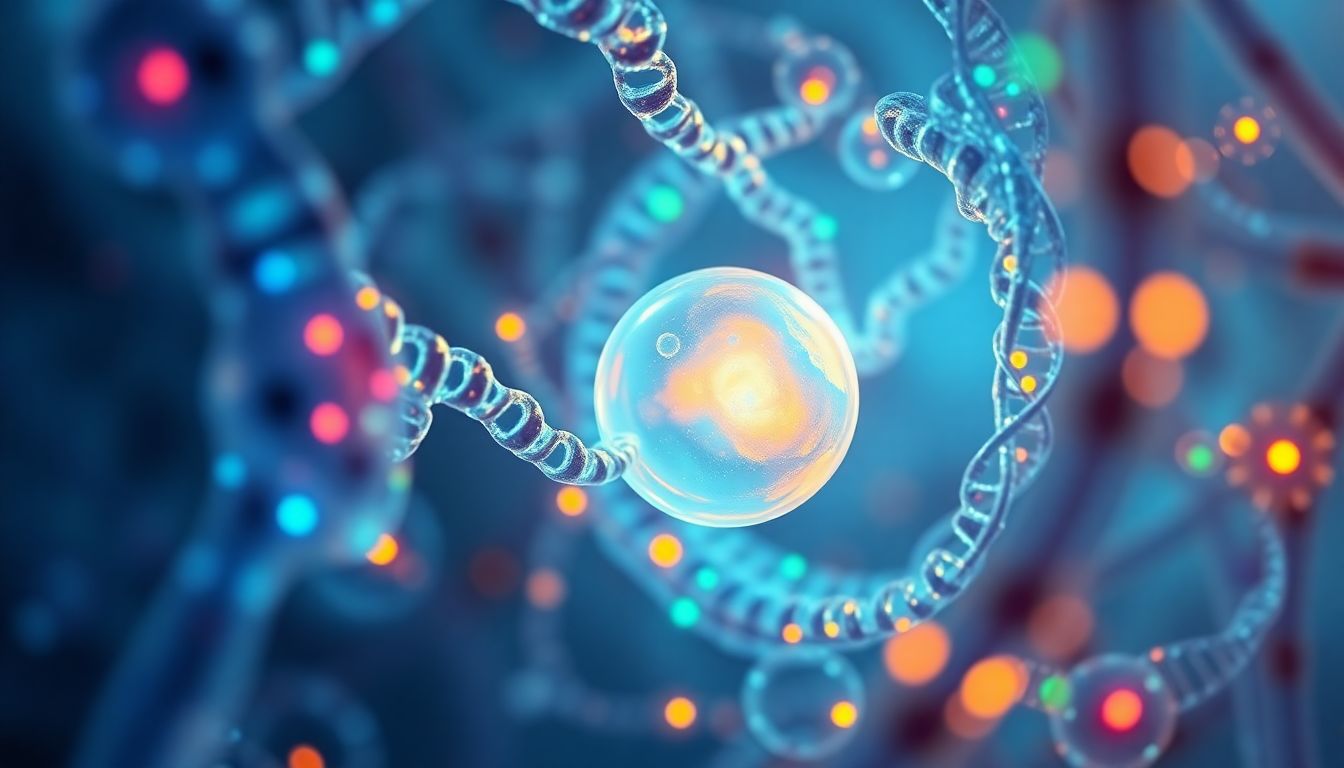Rare Genetic Disorders

Rare Genetic Disorders: Emerging Treatments and Hope for the Future
Imagine living with a disease so rare, many doctors haven't even heard of it. This is the reality for millions affected by rare genetic disorders. But there's reason for hope! Gene editing and new therapies are changing what's possible. This article explores these conditions and the latest advancements in treatment.
Understanding Rare Genetic Disorders
Defining "rare" isn't always easy. Diagnosing it can take years. Let's unpack what makes these disorders unique.
Defining "Rare": Prevalence and Impact
A rare disease often affects fewer than 200,000 people in the United States. Although each illness impacts a smaller population, together they affect millions. They pose a significant public health challenge. These conditions present unique needs for patients, families, and healthcare systems.
The Diagnostic Odyssey: Challenges and Delays
Getting a diagnosis can feel like a never-ending quest. Symptoms vary, and awareness is low. It's a long, frustrating journey for families. Patients often visit many doctors before finding answers. This "diagnostic odyssey" causes stress and delays proper care.
The Importance of Genetic Counseling
Genetic counselors help families understand their risk. They explain inheritance patterns and offer support. They can help you make informed decisions about your health. They're important guides when dealing with rare genetic disorders.
Lesser-Known Genetic Conditions: Spotlight On Specific Cases
Time to look at some specific, less common, genetic disorders. Learn about their symptoms, how they're diagnosed, and any current research.
Case Study: Moebius Syndrome
Moebius Syndrome is a rare neurological disorder. It causes facial paralysis. People with it can't smile or frown. It often involves problems with eye movement and sometimes limb differences. Researchers are exploring possible genetic causes and ways to improve management of its symptoms.
Case Study: Fibrodysplasia Ossificans Progressiva (FOP)
FOP is a very rare genetic condition. Muscles and connective tissues gradually turn into bone. This leads to limited movement. A specific genetic mutation causes it. There are big hurdles in developing effective treatments.
Case Study: X-Linked Adrenoleukodystrophy (X-ALD)
X-ALD impacts the brain and adrenal glands. It affects primarily males. There are different forms, some more severe than others. Treatment options include bone marrow transplant and gene therapy in some situations. Early detection is key to improving outcomes.
Gene Editing: A Revolutionary Approach
Gene editing offers a new way to tackle genetic disorders. It works by targeting and correcting faulty genes. CRISPR-Cas9 is a key technology used for this.
CRISPR-Cas9: How it Works
CRISPR-Cas9 acts like molecular scissors. It finds and cuts specific DNA sequences. Scientists use it to edit or disable harmful genes. It's a precise and powerful tool.
Ethical Considerations
Editing genes raises ethical questions. "Off-target" effects are a concern. Germline editing (changes passed to future generations) is controversial. We must carefully consider the risks and benefits.
Clinical Trials and Early Successes
Clinical trials are underway. Gene editing is being tested for several genetic disorders. Early results are promising! There's hope for potential cures.
Other Emerging Therapies: Beyond Gene Editing
Besides gene editing, other treatments are being developed. These offer diverse approaches to treating these conditions. Gene therapy, RNA-based therapies, and enzyme replacement therapy are among them.
Gene Therapy: Delivering Corrective Genes
Gene therapy delivers healthy genes into cells. It aims to fix the underlying genetic problem. Different vectors (delivery systems) are used. This is a promising treatment for many diseases.
RNA-Based Therapies: Targeting Gene Expression
RNA-based therapies change how genes are expressed. Antisense oligonucleotides (ASOs) and siRNA are examples. They can reduce or increase protein production.
Enzyme Replacement Therapy: Supplementing Missing Enzymes
Enzyme replacement therapy (ERT) helps with lysosomal storage disorders. It provides the missing enzymes. This can reduce the buildup of harmful substances.
Access to Treatment and Support Systems
Getting treatment for rare disorders is difficult. Cost is a major barrier. Access is limited. Support systems play an important role.
Navigating Healthcare Systems: Challenges and Resources
Finding the right care can be complex. It's important to understand insurance coverage. Patient advocacy groups can help guide you. They offer vital information.
Patient Advocacy Groups: A Vital Support Network
These groups raise awareness. They offer support and connect families. They push for more research funding. These networks are incredibly valuable for those impacted.
The Role of Government and Research Funding
Government funding is essential for research. Policies affect access to treatments. Investing in rare disease research makes a big difference.
Conclusion
Treating rare genetic disorders is rapidly advancing. Gene editing and other new therapies offer hope. We need more research, support, and advocacy. Learn more. Support organizations that focus on rare disease research. This can help improve the lives of those affected.


Comments
Post a Comment